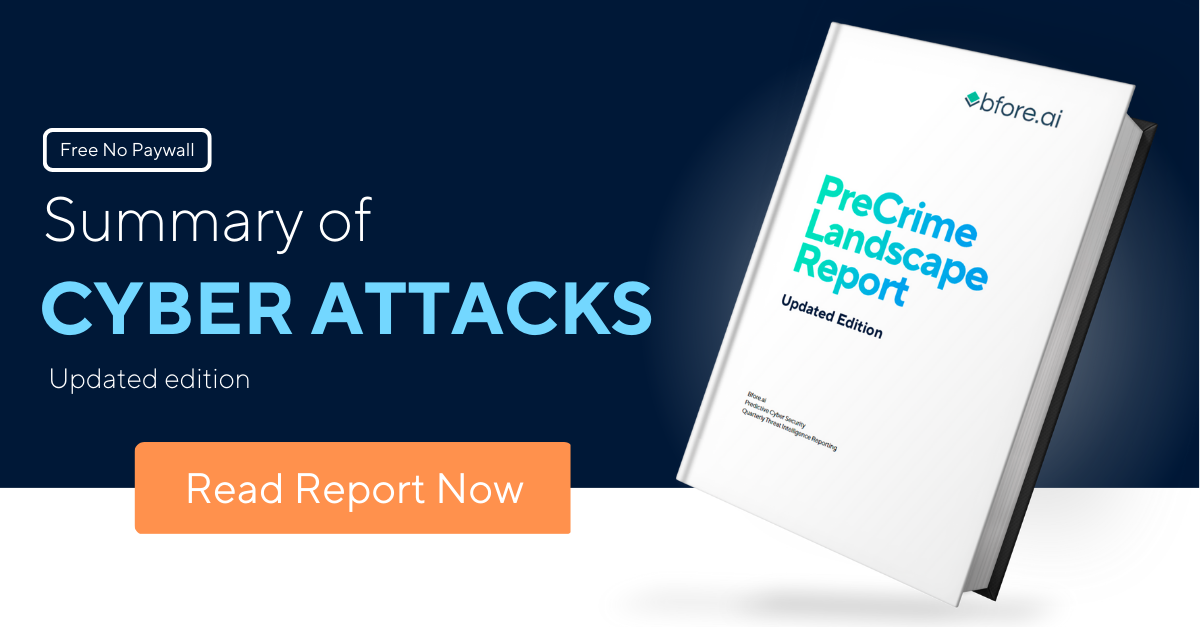4 Social Engineering Trends To Watch in 2023
.jpeg?width=1997&height=1115&name=Sans%20titre%20(7).jpeg)
Social engineering focuses on exploiting the human component of cybersecurity. Using trickery, attackers rely on social engineering to convince victims to take high-risk actions, ignore security practices, or circumvent endpoint security. This can expose sensitive information or lead to the execution of malicious content.
Types of social engineering attacks vary widely but cyber criminals repeat tactics that are successful. This creates records of social engineering trends in cybersecurity showing professionals what to expect. In this article we will discuss the latest social engineering trends that are on the rise according to the research in our recently published PreCrime Landscape Report.
What is a Virtual Kidnapping Scam?
In virtual kidnapping scams, the scammer calls or messages victims, saying a loved one has been kidnapped and demanding a ransom be paid for their release. They find and spoof registered phone numbers making the call appear to come from the victim’s relative.
Signs of a Virtual Kidnapping Scam
High-pressure tactics, including providing convincing details about the kidnapping make it challenging for the victim to determine if the call is legitimate. Fortunately, there are some signs that a virtual kidnapping is taking place that you can look for to avoid becoming a victim.
- Scammers often use vague information about the loved one that is available via social media rather than specifics.
- The scammer will request that payment be made in non-traceable forms such as cryptocurrency or gift cards.
- They might also request personal information such as bank account numbers or social security numbers to steal funds.
- Callers may ask to stay on the line or to have you call back to a specific number. If possible, call the kidnapping victim on a separate line to quickly unveil the ruse.
What is SEO Poisoning?
Search engine optimization (SEO) poisoning is a tactic used by cybercriminals to manipulate search engine rankings and redirect users to malicious websites. Threat actors inject malicious code or links into legitimate websites or create malicious websites. In both cases the websites are optimized for specific keywords allowing their site to rank higher in search results than the brand’s authentic site.
The Dangers of SEO Poisoning
In November, threat actors compromised approximately 15,000 websites using SEO poisoning and redirected users to their own fake sites. The dangers of SEO poisoning include:
- Malware and Virus: The attackers use SEO poisoning to redirect users to websites that contain malware or viruses. These sites infect a user’s computer and steal sensitive information such as login credentials, personal data, and financial information.
- Phishing Scams: SEO poisoning is used to redirect users to fake websites that mimic legitimate sites, such as online banking or shopping sites. The purpose is to steal personal information or login credentials.
- Propaganda and fake news: SEO poisoning is used to promote false information or propaganda. Attackers redirect users to fake news websites containing biased or misleading information.
- Adware and unwanted software: SEO poisoning is used to redirect users to websites that contain unwanted software or adware. These stealthy software packages slow down a user’s computer, display unwanted ads, or collect personal information.
- Reputation Damage: SEO poisoning can be used to redirect users to negative reviews or fake complaints about a person or business. This harms their reputation, especially for businesses that rely on online presence or online reviews.
Business Email Compromise Attacks Target More Than Money
Business email compromise (BEC) is a form of spear phishing. A threat actor impersonates a high-profile employee to trick others employees, partners, or suppliers. These types of social engineering attacks often target money transfers but that has changed. Recently, BEC attacks have targeted physical goods, stealing entire shipments of food products and ingredients valued at hundreds of thousands of dollars.
Business Email Compromise Attack Types
Here are a few ways BEC can be used to steal commodities or goods:
- Invoice fraud: Cyber criminals can gain access to a business’s email account and change the bank account information for vendor invoices. They redirect payments for goods or services to their own accounts.
- Shipping fraud: Criminals can intercept shipping instructions and change the delivery addresses to a location they control. This allows them to intercept the goods before they reach the legitimate recipient.
- Purchase order fraud: Criminals can create fake purchase orders and send them to suppliers, requesting delivery of goods to an address they control.
- Phishing emails: Attackers phish employee email accounts to steal login credentials. Then use the email account to request goods or other resources from other employees or from vendors.
Third-Party Breach Supply Chain Attacks Continue to Rise
Supply chain attacks use a third-party partner or provider with access to the target’s data. They target a third party with a weaker security posture, which is why almost 77% of organizations detected unknown participants in their supply chain in 2022.
Once the third-party is compromised, attackers use the benefits of being in the supply chain to launch their attacks. They could be sending corrupted patches for software or masquerading as the supplier, and attempting to learn sensitive information about the target company via phishing.
Impact of Third-Party Supply Chain Attacks
Third-party breaches in the supply chain are particularly dangerous because they often impact multiple victims. They provide attackers with access to sensitive information and systems that they may not have been able to access otherwise. These attacks are difficult to detect and mitigate, as they occur at a point in the supply chain not directly controlled by the victimized organization.
Some specific dangers include:
- Pre-installation attacks: These attacks occur before software or hardware is installed on a system. This allows malware or other malicious code to be inserted into the supply chain.
- Post-installation attacks: These attacks occur after software or hardware has been installed. Often, they involve the use of malware or other malicious code that has been inserted into the supply chain.
- Counterfeit attacks: These attacks involve the production and distribution of counterfeit software or hardware that contains malware or other malicious code.
Third-party supply chain attacks cause significant financial and reputational damage.
Know the Threats, Read the Report
These trends are only the starting point for cybercriminals. As data breaches, phishing, and ransomware attacks continue to rise, it is crucial to know all of the threats that face your organization. Bfore.ai has released a PreCrime Landscape Report to help organizations know everything that is in attackers' toolkits for 2023.
Download the PreCrime Landscape Report today to give your organization the upper hand in improving your security posture for the coming year.



